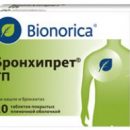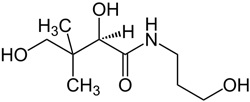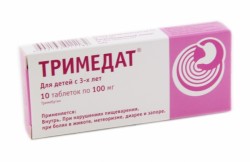Today, our site decided to tell your readers about one of the modern Antibiotics - azithromycin, which is currently produced under different trade names. These are very in demand, prescribed by many doctors. We will offer readers information about properties, indications for use, taking rules, side effects of the drug and its synonyms.
General information about azithromycin, in which drugs it enters
Azitromycin - Popular now macrolide obtained by semi-synthetic.
In general, the class of macrolide antibiotics appeared in 1952. Then the Armenian of Macrolides was created - Erythromycin. For many years, it has been successfully used in the treatment of various diseases, but this medicine had to be used several times a day, it quickly destroyed in the body and had a number of undesirable effects, so scientists continued to create new antibiotics of this group, improving and improving them. Already created more than 20 macrolide antibacterial agents. Macrolids are divided into several subclasses. Pharmacologists made a structural restructuring of a medicinal substance, creating azithromycin, which became the first representative of the azalide subclass. After a number of clinical trials in 1988, the drug appeared in the global medication market, was registered in Russia under the trademark «Sumameried». Azitromycin is still part of the following drugs: Zitrolid, Hemomycin, Zimax, Zimosh, Zitrocin, Summid, Sumamox, Summa Mositin, Aithroks, Azimoks, Azitral, Azitropin ... All these drugs are synonymous, since they have the same substance. They differ only at cost and manufacturer.
Azitromycin and its synonyms from other antibiotics distinguishes a wider range of action, the best treatment results, a single reception per day, a smaller probability of sustainable bacteria strains.
Form release
Several dosage forms are available:
- capsules, pills;
- powder used to prepare a suspension - a solution used inward (for children, with fruit flavoring);
- Powder coming on the preparation of infusion solutions.
Most often assign oral forms, that is, used inside (through the mouth) - capsules or tablets, coated containing 500, 250 or 125 mg of active substance. About them we will talk in more detail.

Pharmacological properties
Azitromycin destructively affects pathogenic bacteria sensitive. It has a bacteriostatic effect, and if the concentration of the drug in the focus of the infection is high, the effect will be bactericidal. Laboratory studies show that this antibiotic is sensitive from among gram-positive microorganisms: different staphylococci, streptococci; From gram-negative: Legionell, Nasisseria, Gardnerell, Moraxella, Borgetiel, Campylobacter; Anaeroba (clostridium, peptopulationococcus), as well as mycoplasma, chlamydia, treponema, ureaplasm, borrelia, Schigella, Salmonella, Helicobacter. If it is revealed that the analyzed gram-positive bacteria is resistant to erythromycin, they will show stability and to azithromycin.
The experience of the doctors indicates that the drug is highly effective in the treatment of urogenital, skin and respiratory infections. After admission, the medicine is quickly absorbed, not destroying in the acidic medium of the stomach, and the straight is sent to the focus of infection, accumulating there and destroying bacteria-causative agents of inflammation. Therefore, a single technique of antibiotic per day is allowed. The drug is used for 3 days (the maximum course duration - 5 days), this is enough to destroy the infection, because the drug remains a few more days in the focus of inflammation.
The anti-inflammatory and immunomodulatory effect is established, the phagocytes and macrophages of cells are mobilized, which are «Warriors» In our organism and protect us from pathogenic microbes.
Azitromycin has significantly less side effects than other antibiotics.
Indications for use
Azithromycin is advisable to prescribe with such diseases, the pathogens of which are sensitive to this macrolide. Doctors discharge this medicine in the following diseases:
- Infectious processes flowing in the upper respiratory tracts and ENT organs - Angina, Tonsillites, laryngitis, pharyngitis, sinusits, Gaymorites, Otiti;
- infections that are keen deeper - bronchitis, pneumonia, even atypical nature;
- scarlet fever, Lyme disease, erythema;
- inflammation of the skin, soft tissues - dermatosis, face, impetigo;
- urinary infections - cervicitis, urethritis (gonane and non-monorary);
- Comprehensive treatment of ulcery disease.
Contraindications and side effects
The drug cannot be used with pronounced renal or liver failure, Arrhythmia, The period of lactation, allergies or increased sensitivity to macrolides marked earlier. Tablets and capsules are not used in the treatment of children under the age of 12, there is another dosage form for them - a pleasant suspension of banana, apple, strawberry taste. Although side effects are rare, MyMedinform.COM lists them:
- diarrhea or constipation, vomit, nausea, lack of appetite;
- jaundice, liver damage;
- Breastache pain and heartbeat;
- Candidiasis, skin rashes, urticaria, itching, Outlet Quincke;
- drowsiness, fatigue, dizziness.
How to apply drug?
If the patient has no contraindications, the azithromycin can be used to treat. Be sure to follow all the prescriptions and dosage to avoid side effects. The capsule (or tablet) washed with boiled water in one hour before you eat or 2 hours after the meal. Just one taking medication per day.
Adults are taken with infectious processes of respiratory tract 500 mg every day for three days. That is, one packaging will be enough, in it you will find 3 capsules (or tablets). With inflammation of soft tissues or skin, it is necessary to drink 2 capsules on the first day (each contains 500 mg of azithromycin), and in the next 4 days take 1 capsule per day. That is, the course will require 2 packaging 3 capsules. Similar to the treatment diagram in the treatment of the initial stage of borreliosis (this is Lyme's disease).
For ulcerative diseases for the purpose of antihelicobacter therapy, azithromycin is prescribed 3 days in a row 1.0 g per day.
With diseases of the urinary sphere, it is necessary to drink only 2 capsules, that is, 1.0 g of the drug once, the drugs are no longer needed on the following days.
With pneumonia (or infections of a small pelvis), the first days the medicine is introduced into Vienna, and after the doctor prescribes capsules (or tablets), given the condition of the patient and the dynamics of the course of the disease.
Children The diagram of reception and dose calculates the pediatrician, they depend on the diagnosis and weight of the small patient.
special instructions
When appointing azithromycin to a woman, nursing breasts, a question with a pediatrician about temporary transformation infant to artificial mixtures.
Pregnant women, azithromycin discharge only in cases of extreme necessity.
If you forgot to take another dose of the drug on time, try to do it as soon as possible. The next capsule (or tablet) according to the scheme to accept it is necessary 24 hours after.
Sometimes azithromycin is still prescribed by antacid tools, for example, Maalox, Almagel, Phosfalugel. It happens at ulcerative disease. In this case, the interval between antacid and azithromycin techniques should be at least two hours.
Our site warns its readers: If you are already taking any medications for the treatment of other ailments, you will certainly report this to your doctor, there are funds incompatible with azithromycin, and the action of a number of drugs can be loosen or, on the contrary, to potentiate.
The result of antibiotic therapy is directly dependent on the designated drug. If the antibacterial agent is chosen correctly, that is, it is actively in relation to the causative agent of the disease and take into account all contraindications, the treatment will be successful.








